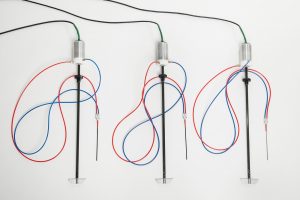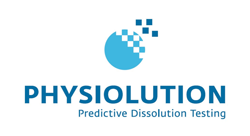
The novel shaft is constructed according to the pharmacopoeial requirements. The shaft hosts a pH probe, two separate channels for titer gases, gas fittings, a paddle blade and a signal processing unit. The shaft can be used in combination with the automated pH controller dedicated for dissolution – the pHysio-grad® system. This device enables the dynamic adjustment of the media pH by introducing CO2 or an inert gas into the dissolution medium. The system is composed of a pH electrode, a gas diffusor, a digital microcontroller and a system of solenoid valves that are used for dosing either neutral gas or CO2. System operation and pH-adjustment are software controlled and enable the setting of trigger values as well as a regulation hysteresis for the pH-adjustment process. Over the entire experiment, the potential of the electrode is measured and digitalised. The digital signal is then processed and instantly regulates the solenoid valve that adjusts the amount of CO2 or neutral gas introduced into the dissolution medium via the shaft.
The novel drive shaft:
– can precisely monitor and adjust the pH value of commonly used hydrogen carbonate buffers
– in combination with pHysio-grad® enables a precise pH adjustment in the range of pH 5.5 to 8.3, with a maximum – deviation of ±0.02 pH units
– utilizes pure CO2, mixtures of CO2 with other gases, or inert gases such as air, N2 and He as titer gases
– is characterized by sufficient robustness, good performance stability as well as a highly dynamic pH adjustment
– can precisely adjust the pH and simulate desired pH gradients within the physiological intestinal pH range
– can be used in various pharmacopoeial and non-compendial dissolution test devices
– has no influence on the hydrodynamic conditions of the pharmacopoeial dissolution test
These unique features make the novel paddle drive shaft and pHysio-grad® particularly useful for challenging R&D and QC applications in dissolution tests in which hydrogen carbonate based buffers are utilized.

